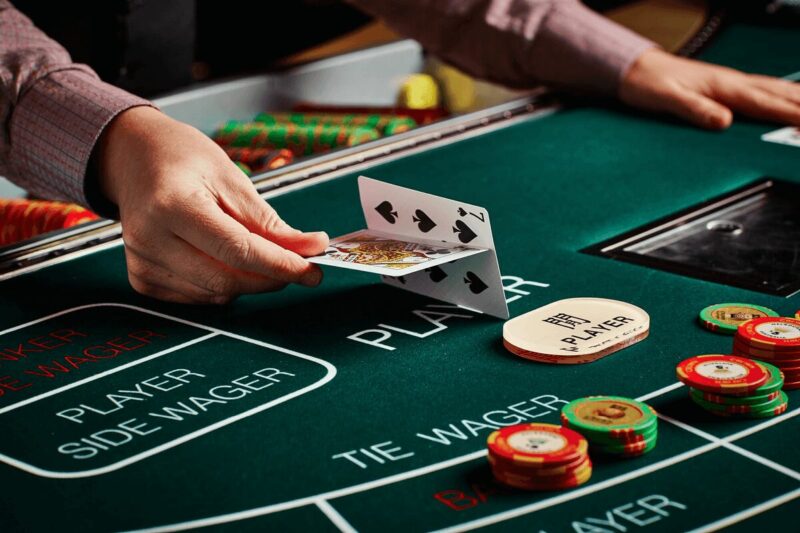Picture this ─ standing at the edge of a bungee jump, the world beneath you feels distant, and your heartbeat races. Some freeze at the thought; others leap with exhilaration.
What compels those who embrace such intense experiences?
The allure of risk holds a fascinating grip on certain individuals, particularly in high-stakes arenas like gambling.
Key Points
- Thrill-seekers thrive on dopamine surges from uncertain outcomes.
- Risk preferences often reflect deeper personality traits.
- Genetics, upbringing, and environment influence risk inclinations.
- Risk-taking offers a sense of control in chaotic situations.
- The gambling world provides a controlled environment to test limits.
Why Do Thrill-Seekers Chase Uncertainty?
Thrill-seeking behavior stems from the brain’s reward system. Dopamine, often referred to as the “feel-good” chemical, surges when a person engages in risky activities. High-risk scenarios—whether at the poker table or extreme sports—activate this system, creating a loop of anticipation and satisfaction.
Casinos, like RocketPlayCasino, amplify this sensation by offering environments that heighten excitement through unpredictability.
Some people may crave the adrenaline rush to escape routine. The intensity of high-stakes decisions often provides an emotional high not found in everyday life.
Traits Linked to Embracing Risk
Certain personality traits drive people toward risky activities. Studies identify three key traits:
- Impulsivity ─ Acting on instincts without overthinking potential consequences.
- Sensation-seeking ─ A preference for novel and intense experiences.
- Confidence ─ A belief in one’s ability to control outcomes, even in uncertain situations.
These traits often interact with environmental factors, such as cultural attitudes or peer influence. For example, someone surrounded by adventurous friends may feel encouraged to take bold steps.

Biological Drivers of Risk Preferences
Genetics plays a crucial role in shaping risk tolerance. Research shows that specific gene variations influence dopamine receptor activity. People with heightened dopamine sensitivity may find risky choices more rewarding.
Upbringing also impacts risk attitudes. Childhood exposure to calculated risks—like climbing trees or trying new sports—can foster confidence in handling uncertain situations later in life. Conversely, overly sheltered environments may reduce risk tolerance.
How the Environment Shapes Risky Decisions
The setting where risks are evaluated significantly affects outcomes. Gambling provides a controlled space to measure risk versus reward, making it a compelling case study. Bright lights, alluring sounds, and the possibility of winning create a sensory overload, heightening decision-making intensity.
In contrast, real-world scenarios like entrepreneurship often demand measured calculations. Entrepreneurs weigh potential losses against gains, demonstrating that risk-taking doesn’t always mean recklessness.
The Thrill of Gambling
For many, gambling represents the ultimate controlled risk. It allows individuals to explore uncertainty within defined boundaries. Players engage in games where odds are stacked, yet the possibility of beating those odds fuels excitement.
Why does gambling appeal so strongly?
- Immediate rewards ─ Winning generates instant gratification.
- Uncertainty ─ The unpredictability keeps the brain engaged.
- Social interaction ─ Group activities like poker add another layer of enjoyment.
The industry has harnessed these factors to create immersive experiences, blending entertainment with risk.

Risk-Taking as a Form of Control
Ironically, many who enjoy risks do so to feel in control. High-stakes environments force individuals to make quick decisions, fostering a sense of empowerment. For some, taking calculated chances provides clarity and focus absent in their day-to-day lives.
Consider an experienced poker player. Each decision—fold, call, or raise—reflects an effort to control the outcome, even when chance governs much of the game.
Psychological Rewards Beyond Thrill
Beyond immediate excitement, risk-taking offers deeper rewards:
- Personal growth ─ Overcoming fears strengthens resilience.
- Increased confidence ─ Success in risky scenarios builds self-assurance.
- Learning opportunities ─ Failures provide valuable lessons for future decisions.
For example, someone who ventures into stock trading gains insights into financial markets, whether they profit or incur losses.
Practical Tips for Navigating Risk
Managing risky decisions requires balancing instinct and logic. Here’s how to approach them wisely:
- Start small ─ Begin with low-stakes scenarios to test your comfort level.
- Evaluate outcomes ─ Consider both potential rewards and losses.
- Seek advice ─ Learning from experienced individuals can offer fresh perspectives.
- Set limits ─ Define clear boundaries to avoid unnecessary setbacks.
This framework applies to gambling, entrepreneurship, and even personal decisions like traveling to unfamiliar destinations.

What Draws Some to Extremes While Others Avoid Them?
The difference between those who embrace uncertainty and those who shy away often lies in perception. For risk-takers, uncertainty offers a challenge—an opportunity to test limits and gain rewards. The risk-averse see it as a potential threat, prioritizing safety and control over exploration.
Cultural influences reinforce this divide. Societies that value boldness and innovation tend to celebrate calculated risks, encouraging individuals to take chances and learn from failures. In contrast, those emphasizing caution may discourage risky behavior, framing it as reckless or unnecessary.
Upbringing also plays a role. Early exposure to manageable risks fosters confidence, while overly protective environments can lead to a stronger aversion to uncertainty. Both perspectives, shaped by experience and environment, contribute to a balanced approach to risk in society.
The Role of Media in Risk Perception
Movies and television often glamorize risks, portraying characters who thrive under pressure. This media influence subtly encourages audiences to romanticize uncertain ventures, from high-stakes gambling to daring heists.
At the same time, real-life success stories—such as entrepreneurs who built empires after taking bold risks—reinforce the idea that risk leads to reward.

Balancing Risks and Rewards
While some thrive on uncertainty, others prefer stability. Both approaches offer value, depending on context. Here’s how to strike a balance:
- Identify goals ─ Clarify what you hope to achieve.
- Assess capacity ─ Understand your limits and strengths.
- Adjust as needed ─ Stay flexible when circumstances change.
Risk isn’t inherently good or bad; its value depends on how it’s approached.
Conclusion
Risk-takers bring a unique energy to the world, challenging norms and pushing boundaries. By understanding the factors driving their choices, we gain insights into human behavior and decision-making.
For those drawn to uncertainty, controlled risks—like gambling—offer a way to explore their limits without venturing into chaos. Balancing risk with preparation ensures rewards without unnecessary setbacks. Whether you’re a thrill-seeker or prefer safer bets, recognizing the motivations behind your choices can help you navigate challenges more effectively.
Related Posts:
- Top 10 Dating Apps Expats Use to Find Love in Germany (2025)
- How Casinos Use Psychology to Influence Your Betting…
- Will AI Replace Software Engineers? The Truth Behind…
- Mapping the Modern World ─ The Technologies Behind…
- Critical Ingredients Behind Online Casino Triumphs
- Why Your Data Center Needs an Attestation of Compliance








